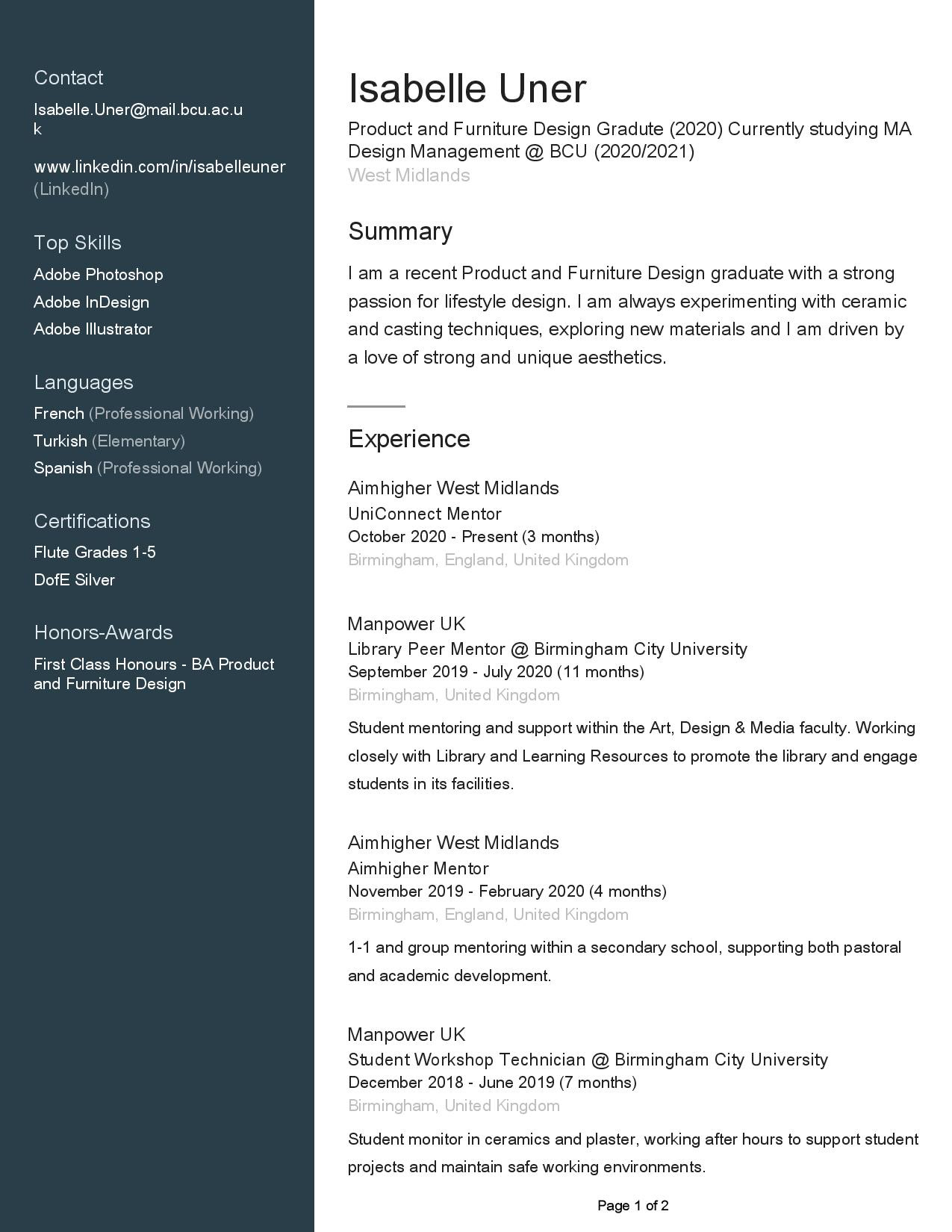REFERENCES
Alderfer, C., (1969). An empirical test of a new theory of human needs. Organizational Behavior and Human Performance, 4(2), pp.142-175.
Blanchard, K., Zigarmi, P and Zigarmi, D. (1985). Leadership and the One Minute Manager: Increasing Effectiveness through Situational Leadership.
Deci, E. and Ryan, R., (2000). Intrinsic Motivation And Self-Determination In Human Behavior. 1st ed. Rochester, New York: Rochester University, pp.68-76.
Design Council, (2005). A Study Of The Design Process. Eleven lessons: managing design in eleven global brands. London.
Durling, D., Cross, N. and Johnson, J. (1996) Personality and learning preferences of students in design and design-related disciplines. Available at: https://hdl.handle.net/2134/1477 (Accessed: 9 December 2020).
Fleming, N.D. and Mills, C., (1992). Not another inventory, rather a catalyst for reflection. To improve the academy, 11(1), pp.137-155.
Fuchs, L. S., Fuchs, D. and Deno, S. L. (1985) ‘Importance of Goal Ambitiousness and Goal Mastery to Student Achievement’, Exceptional Children, 52(1), pp. 63–71
Glei, J., (2014). Make Your Mark: The Creative's Guide To Building A Business With Impact. 1st ed. Amazon Publishers.
Guldi, J. and Armitage, D., (2014). The History Manifesto. Cambridge: Cambridge University Press.
Hersey, P., Blanchard, K.H. and Natemeyer, W.E., (1979). Situational leadership, perception, and the impact of power. Group & Organization Studies, 4(4), pp.418-428.
Klapp, O. E. (1969). Collective search for identity. New York, NY: Holt, Rinehart.
Knobe, J. (2013). Experimental Philosophy And The Notion Of The Self.
Kolb, D., (1984). Experimental Learning. Englewood Cliffs: Prentice-Hall.
Luft, J. and Ingham, H., (1961). The Johari Window: a graphic model of awareness in interpersonal relations. Human relations training news, 5(9), pp.6-7.
Maslow, A., (1943). A Theory of Human Motivation. Psychological Review, 50(4), pp.370-396.
Myers-Briggs Foundation. (2020). MBTI® Basics. [online] Available at: https://www.myersbriggs.org/my-mbti-personality-type/mbti-basics/ [Accessed 14 Dec. 2020].
Nin, A (1975) The Diary of Anais Nin 1944-1947, New York & London: Harcourt Publishers Ltd.
Personality Growth (2018). Here’s How Good You Are with Time Management, Based on Your Personality Type. [online] Personality Growth. Available at: https://personalitygrowth.com/heres-how-good-you-are-with-time-management-based-on-your-personality-type/#:~:text=INFJs%20are%20often%20in%20the,to%20be%20disrespectful%20of%20others. [Accessed 14 Dec. 2020].
Sennett, R. (2008). The Craftsman, Allen Lane
Solnit, R., (2006). A Field Guide To Getting Lost. Penguin Random House USA.
Tannenbaum, R. and Schmidt, W., (2009). How To Choose A Leadership Pattern. Boston, Mass.: Harvard Business School Press.
FIGURE LIST
FIGURE 1 - Uner, I. 2020. 5 Year Career Plan infographic.
FIGURE 2 - Uner, I. 2020. 5 Year Plan strategy table.
FIGURE 3 - Uner, I. 2020. INFJ Personality Type Graphic
FIGURE 4 - Uner, I (2020) INFJ Personality Type Breakdown - adapted from Potentially summary report
FIGURE 5 – Uner, I. 2020. Johari Window graphic adapted from Luft & Ingham, 1961
FIGURE 6 – Uner, I. 2020. Johari Window graphic adapted from Luft & Ingham, 1961 and Myers-Briggs Personality Test
FIGURE 7 – Uner, I. 2020. graphical representation of VARK Learning Style adapted from Fleming & Mills, 1992
FIGIRE 8 – Uner, I. 2020. Double diamond model adapted from Design Council, 2005.
FIGURE 9 - Uner, I. 2020. Experiential Learning Cycle model adapted from Kolb, 1984
FIGURE 10 - Uner, I. 2020. Needs Hierarchy diagrams adapted from Maslow, 1943 and Alderfer, 1969
FIGURE 11 - Uner, I. 2020. Team Role preferences diagram based on Myers-Briggs personality test provided by Potential.ly
FIGURE 12 - Uner, I. 2020. Leadership Continuum adapted from Tannenbaum & Schmidt, 1958.
FIGURE 13 - Table analysing the key points raised in Tannenbaum & Schmidt's continuum
FIGURE 14 - Uner, I. 2020. Situational Leadership model based on Hersey & Blanchard, 1979.
FIGURE 15 – Uner, I. 2020. Zine exploration #1
FIGURE 16 - Uner, I. 2020. Motivation map adapted from Deci and Ryan, 2000
FIGURE 17 - Uner, I. 2020. Needs Hierarchy diagrams, adapted from Maslow, 1943 and Alderfer, 1969.
Appendix 1 - Potential.ly Myers-Briggs test document
Using the online platform Potential.ly through the university, a Myers-Briggs personality type test was carried out and the resulting information collected. The full document can be accessed through the following link. Date: 26th October 2020.
APPENDIX
Appendix 2 - Johari Window team brainstorming activity
Within a classroom setting, Team A carried out the creation of individual Johari Windows, using discussion and suggestion to help each other identify words to fit into each section. Session ran from 2 til 5, 28th October 2020.
Appendix 3 - motivation focus group
Using the same team set up as the Johari Window exercise, a focus group was carried out that helped brainstorm ideas for the motivation section of the investigation.
Date of focus group: 4th November 2020
Date of focus group: 4th November 2020
Appendix 4 - Linkedin Profile
A link to my linkedin profile to provide context for past studies and professional ventures - link here.


